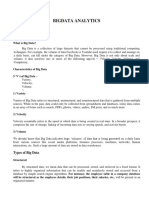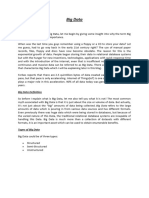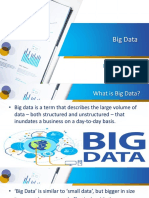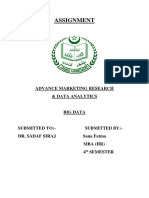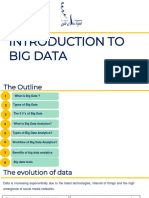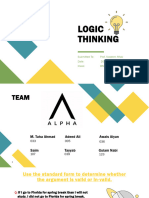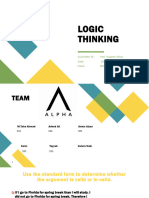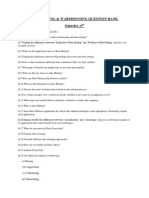0% found this document useful (0 votes)
15 views15 pagesBig Data Lecture # 1
The document outlines the course 'Programming for Big Data' which covers the significance of big data, its characteristics, and the differences between big data and small data. It discusses the 5 Vs of big data (Volume, Velocity, Variety, Veracity, and Value), types of big data, and its impacts on business, science, and society. Additionally, it highlights various sources and examples of big data across different sectors.
Uploaded by
Taha AhmadCopyright
© © All Rights Reserved
We take content rights seriously. If you suspect this is your content, claim it here.
Available Formats
Download as PDF, TXT or read online on Scribd
0% found this document useful (0 votes)
15 views15 pagesBig Data Lecture # 1
The document outlines the course 'Programming for Big Data' which covers the significance of big data, its characteristics, and the differences between big data and small data. It discusses the 5 Vs of big data (Volume, Velocity, Variety, Veracity, and Value), types of big data, and its impacts on business, science, and society. Additionally, it highlights various sources and examples of big data across different sectors.
Uploaded by
Taha AhmadCopyright
© © All Rights Reserved
We take content rights seriously. If you suspect this is your content, claim it here.
Available Formats
Download as PDF, TXT or read online on Scribd
/ 15


























